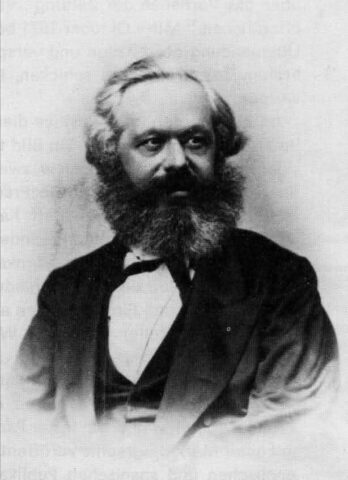By Prabir Purkayastha (Posted Sep 16, 2023)
Originally published: NewsClick.in on September 9, 2023 (more by NewsClick.in)
The twentieth century saw the emergence of public funded universities and technical institutions, while technology development was concentrated in the R&D laboratories of large corporations. The age of the lone inventor—Edison, Siemens, Westinghouse, Graham Bell—had ended with the nineteenth century.1 The twentieth century was more about industry-based R&D laboratories, where corporations gathered together leading scientists and technologists to create the technologies of the future. In this phase, capital was still expanding production. Even though finance capital was already dominant over productive capital, the major capitalist countries still had a strong manufacturing base. In this phase of development, science was regarded as a public good and its development was largely concentrated in the university system or publicly funded research institutions. Technology development was largely regarded as a private enterprise. Science was supposed to produce new knowledge, which could then be mined by technology to produce artefacts.2 The role of innovation was to convert ideas into artefacts. The system of intellectual property—patents and other rights—arose to provide protection to the useful ideas embodied in artefacts. From the beginning, patents also had a public purpose—the state-granted monopoly for a certain period was meant to ensure the eventual public disclosure of the invention: the quid pro quo being full public disclosure in lieu of a limited-term monopoly.
The transformation of this system that had existed for several centuries came about as a result of two major changes in the production of knowledge. The first relates to the way in which, under the neo-liberal order, the university system of knowledge production has been transformed into a profit-making commercial enterprise.3 Secondly, the distinction between science and technology has blurred considerably and the two are more closely integrated than before. For example, an advance in genetics can almost seamlessly lead to an artefact—a drug, a diagnostic tool or a seed—that is both patentable and marketable. Similar is the case of innovations in the field of electronics and communications. Many disciplines of science and also research output in universities, are, in consequence, driven closer to the systems of production. The conversion of the university system into a system producing knowledge directly for commercial purposes has happened in tandem with the destruction of the R&D laboratories that were so much a part of the industrial landscape of the twentieth century. Finance capital controls university science, not just through ‘investment’ in R&D, but also the purchase of ‘knowledge’. Its monopoly is exercised through buying the patents that university research produces. This monopoly in turn allows finance capital to dominate over industrial capital.
The end of the twentieth century revealed the rupture of finance capital and productive capital. Today, global capital operates far more as disembodied finance capital, controlling production at one end with its control over technology and markets at the other. In this phase, where capital increasingly lives off speculation and rent, there is also a marked separation of knowledge as capital from productive or physical capital—plant and machinery. Foxconn/Hon Hai Precision Industries manufactures Apple products but cannot claim a major share in the profits from their sale, since Apple holds the intellectual knowledge and property rights. Roughly, Apple gets 31 per cent of the profits from an iPhone sale, Foxconn less than two per cent.
The transformation of capital to rent seeking, by using its monopoly over knowledge—patents, copyrights, industrial designs, etc.—characterises the current phase of capital. With this, the advanced capitalist countries have increasingly become rentier and ‘service’ economies. In essence, they dominate the world by virtue of controlling the global financial structure, new knowledge required for production, and distribution through retail and global brands.
Even as universities are captured by capital and turned into what is termed as University Inc., the new knowledge they produce is still publicly funded.4 This is true alike of advanced capitalist countries and those like India. The direction of scientific research is dictated by private capital, which takes over any successful outcome, and yet this transformation of science did not come about through being privately funded. The cost of fundamental research is high and only a few of its research outputs may have immediate benefits in terms of advancing technology. This is where the state, whether in electronics or in genetics, takes care of the costs while the patents are handed over to private capital. A hallmark of the neo-liberal system is the socialisation of risk and privatisation of rewards.
The understanding that science needs to be restored as an open and collaborative exercise has given birth to the commons movement. By a curious sleight of hand, capitalism sees the finite commons—the atmosphere and large water bodies such as lakes, rivers and oceans—as infinite, and demands the right to dump waste in these commons. Yet it regards knowledge, capable of being copied infinite number of times without loss, as finite and demands monopoly rights over it!
Never before has society had the ability it does today to bring together different communities and resources in order to produce new knowledge. It is social, universal labour, and its private appropriation as intellectual property under capitalism stands in the way of liberating the enormous power of the collective to generate new knowledge and benefit people.
Extracted with permission from Knowledge as Commons: Towards Inclusive Science and Technology by Prabir Purkayastha, first published by LeftWord, New Delhi, 2023.
Notes:
- ↩ Philo T. Farnsworth, the inventor of television, has been described as the last lone inventor. He fought against the corporate power of David Sarnoff, and RCA, the most powerful company in the business of broadcasting. It was a David versus Goliath battle. Evan I. Schwartz, The Last Lone Inventor: A Tale of Genius, Deceit, and the Birth of Television, Harper Collins, 2002.
- ↩ I have dealt with the relationship between science and technology in more detail in the essay ‘Restoring Conceptual Independence to Technology’. See Chapter 5 in Section II of this book.
- ↩ ‘Academic administrators increasingly refer to students as consumers and to education and research as products. They talk about branding and marketing and now spend more on lobbying in Washington than defence contractors do’. Jennifer Washburn, University, Inc.: The Corporate Corruption of Higher Education, Basic Books, 2005. Before the Bayh-Dole Act 1980, any invention or knowledge produced with public money had to remain in the public domain to be used by any individual or company. The universities have a vested interest in patenting—for example medicine—selling the rights to the private sector and generating either large one-time payments, or a stream of royalties or both. ‘This report shows that NIH funding contributed to published research associated with every one of the 210 new drugs approved by the Food and Drug Administration from 2010—2016’. Ekaterina Galkina Cleary, Jennifer M. Beierlein, Navleen Surjit Khanuja, Laura M. McNamee, Fred D. Ledley, ‘Contribution of NIH Funding to New Drug Approvals 2010—2016’ Proceedings of the National Academy of Sciences, Vol. 115, 10, pp. 2329—2334, 2018. https://doi.org/10.1073/pnas.1715368115
- ↩ Washburn, University, Inc..
About Prabir Purkayastha
Prabir Purkayastha is the founding editor of Newsclick.in, a digital media platform. He is an activist for science and the Free Software movement.
Repulished From: https://mronline.org/2023/09/16/intellectual-property-knowledge-monopoly-and-the-rent-economy/
![]()




